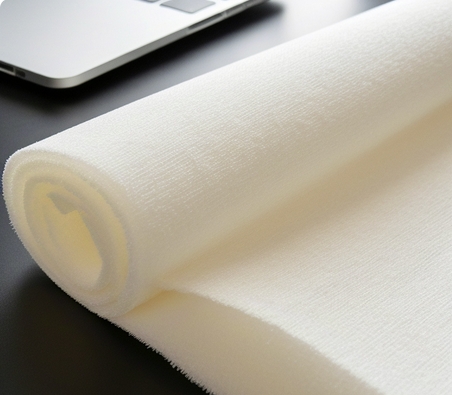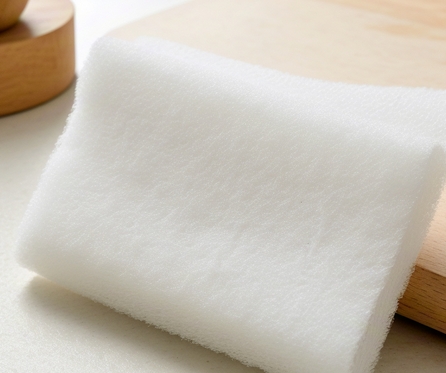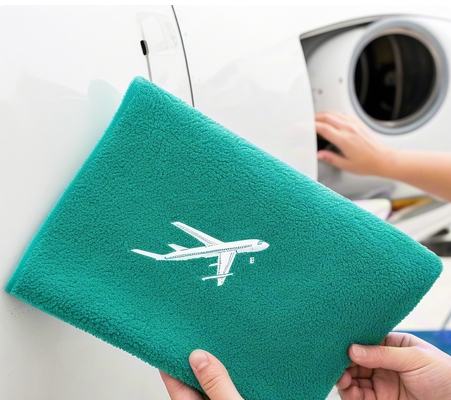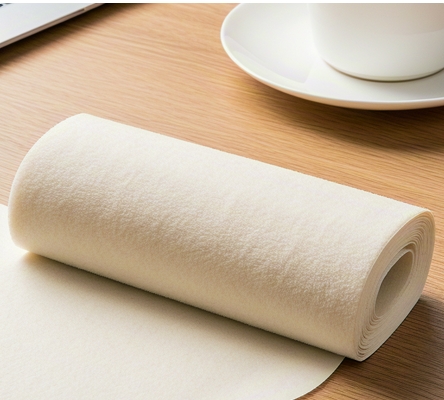Language

In the advanced manufacturing quality control system, dust-free wipe cloth cleaning technology has developed into a pillar solution for process pollution prevention and control. The global semiconductor industry technology roadmap shows that when the process node exceeds 3 nanometers, the cleanliness of the production environment must reach the AMC (air-carrying molecular pollutant) control standard 0.1ng/cm³, which puts forward revolutionary requirements for the performance of professional-grade wipes. Taking the actual measured data of an international lithography machine manufacturer as an example, after using Class 1 dust-free wipe cloth, the residual particle volume on the surface of the optical component is reduced by 45% compared with conventional products, directly extending the maintenance cycle of precision components by 300 hours.
[Engineering Practice of Particle Control and Yield Guarantee] During wafer manufacturing process, 0.1μm particles with a diameter of 1/500 of human hair can cause circuit short circuit. Micron Technology's 2023 technical white paper disclosed that its 12-inch wafer factory optimized the process defect density from 0.05defects/cm² to 0.03defects/cm² through systematic upgrade of the dust-free wipe fabric standard. This breakthrough is due to three major technological innovations in the field of wipe materials: a nanoscale filtering network composed of ultrafine denier fibers (0.08-0.3 denier), a plasma-treated surface passivation layer, and an artificial intelligence-based weaving defect detection system.
[Engineering Interpretation of Key Performance Parameters] According to the dual certification system of IEST-RP-CC004.3 and ISO 14644, professional-grade dust-free wipes must meet four core indicators: 1. Fiber stability: Use continuous filament braiding technology and laser edge sealing process to ensure that the fiber shedding during the wipe process is<5pcs/cm²2. Chemical compatibility: Passed the ultrapure water 18.2MΩ·cm resistivity test, the sodium ion precipitation is controlled below 0.08μg/cm²3. Fluid dynamics performance: It has a dual gradient absorption structure, and can adsorb isopropanol solution equivalent to 12 times its own weight within 30 seconds. 4. Mechanical durability: After ASTM D4966 standard test, more than 92% of the fiber structural integrity is maintained after 500 frictions.
[Economic Benefit Model of Cleansing Grading] Cleansing Grading under the framework of SEMI F72 Standard Directly affects production cost control. In the mass production practice of G10.5 LCD panels, BOE found that when using Class 100-level wipe cloth, the defect repair cost per glass substrate reached US$3.2, and after switching to Class 10-level products, the cost was reduced to US$1.8. More notably, in the field of medical device manufacturing, the use of ISO Class 5 dust-free wipes can reduce the risk of microbial contamination in implanted devices by 60%. This data has been verified by FDA 510(k) certification simulation experiments.
Comparative tests from world-renowned materials laboratories show that the fiber structure of high-quality dust-free wipesis like a nanoscale vacuum cleaner, and its unique Z-shaped groove design can target particle contaminants.
In the field of semiconductor manufacturing, the line width control accuracy of the lithography process directly determines the chip performance stability. Practice shows that the quality of wipes has become a key variable affecting yield rate, among which the breakthrough in dust-free wipes cleaning technology has significantly improved the wafer surface treatment effect.
[Pollution source analysis and prevention and control plan] In the precision wiping process, three types of pollutants need to be paid attention to: 1. Ion pollution: mainly due to the residual halogen elements of fiber treatment. For example, a 12-inch wafer factory once detected that the chloride ion concentration of the wipe cloth exceeded the standard to 500ppb (particle billions), causing electrochemical migration of the metal layer to cause circuit short circuit 2. Particle pollution: including fiber debris with a diameter less than 5μm. When using SEM scanning electron microscope analysis, it can be observed that there are obvious microcrack structures on the surface of the inferior wipe cloth 3. VOC pollution: a molecular-grade film formed by the residue of organic solvents. This nonlevel pollution will change the interfacial tension characteristics of the photoresist.
The industry-leading enterprises have now established a three-level prevention and control system: the raw material screening uses XPS surface analysis technology, the production process configuration is online ion chromatography monitoring, and the terminal products have passed the VDA278 thermal desorption test certification. Taking a large international manufacturer as an example, the gradient density weaving technology developed by it reduced the gap between the fibers of the wipe cloth to 0.3μm, successfully reducing the residual particle amount of silicon wafer surface to ≤5 per square centimeter.
[Material Innovation and Process Breakthrough] The breakthrough development of extreme ultraviolet lithography (EUV) technology puts forward new requirements for wipe materials. The new fluoropolymer substrate shows triple advantages: - The dielectric constant is stable in the range of 2.1-2.3 (equivalent to 60% of polytetrafluoroethylene), effectively inhibiting the electrostatic adsorption effect - After gamma ray sterilization, the bioload level reaches ISO level 5 cleanliness standard - The chemical resistance is increased by 3 times, and it can withstand strong corrosion environments of pH 1-13.
It is worth noting that cutting-edge R&D institutions are testing plasma graft modification technology.
Tags:
RELATED RESOURCES

7 Questions on Selecting Ultrafine Dust-Free Wipes: Comparative Analysis of Ultrafine Fiber Cleaning
Comparative analysis of ultra-fine dust-free cloth and ultra-fine dust-free cloth: professional selection guid......
More

9.9Inch dust-free wipe size specification: How ISO standards reduce consumable costs by 30%
Clean room cleaning revolution: Decrypting the scientific design of 9x9-inch dust-free wipesHistorical evoluti......
More

How Aircraft Wipes Achieve Zero-Contamination Aircraft Engine Cleaning
Wipe star aviation-grade cleaning consumables are manufactured using innovative hydros pinning process, and th......
More

The difference between dust-free paper and wiping paper is revealed. 15 years of experience in the f
In the field of industrial cleaning consumables, dust-free paper and wipe paper are two core products often ca......
More
Related Products
Room 101, Building 1, Angeer Factory, No.4, Hetian Road, Shatian Community, Kengzi Street, Pingshan District, Shenzhen, Guangdong, P.R. China 518122
info@wipestar.com
+86-755-89616775
+86-755-89616773
Related Products
RELATED RESOURCES

7 Questions on Selecting Ultrafine Dust-Free Wipes: Comparative Analysis of Ultrafine Fiber Cleaning
Comparative analysis of ultra-fine dust-free cloth and ultra-fine dust-free cloth: professional selection guid.........
More

9.9Inch dust-free wipe size specification: How ISO standards reduce consumable costs by 30%
Clean room cleaning revolution: Decrypting the scientific design of 9x9-inch dust-free wipesHistorical evoluti.........
More
WIPESTAR
微信官方公众号